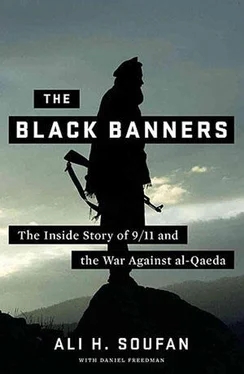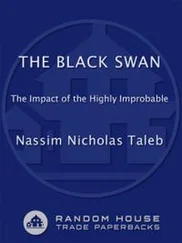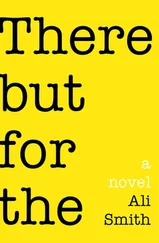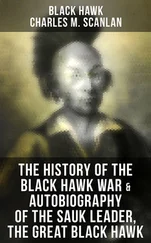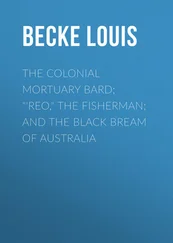True to form, Mohammed divorced Osama’s mother soon after his birth to marry someone else. Mohammed was killed on September 3, 1967, when his private plane crashed while landing in southwest Saudi Arabia. Osama was ten; his image of his father was based less on personal interaction than on the legend of his father’s building a company from scratch. The company continued to flourish after Mohammed’s death, and the young Osama grew up with a desire to emulate his father in building something great.
After a religious upbringing, a young and devout Osama bin Laden traveled to Afghanistan in 1980 to join the fight against the Soviet invaders. While bin Laden did reportedly participate in some battles, due to his Saudi contacts he developed a reputation as a financier and worked with the charismatic cleric Abdullah Azzam in operating Makhtab al-Khidmat—the innocuously named Bureau of Services, which channeled money and recruits into Afghanistan. MAK was founded by Azzam in the early 1980s in Peshawar, Pakistan, and boasted global outposts, including in the United States, where its center of activity was al-Farouq Mosque, on Altantic Avenue in the Boerum Hill section of Brooklyn.
Osama bin Laden was in many ways a product of the mixture of two extremes of 1970s Saudi Arabia: a militant version of Wahhabism and Saudi wealth. Oil had transformed the Saudi government budget from $9.2 billion (1969–1974) to $142 billion (1975–1979). Many lucrative contracts went to the Saudi Binladin Group, as the family business was called, ensuring Osama and his many siblings a steady stream of money.
The Saudi state also used its newfound wealth to spread its Wahhabi sect of Islam across the world, building mosques and madrassas (religious schools) wherever it could while at the same time allowing strict Wahhabism to dictate most domestic law. This created some problems for the luxury-loving royals, whose indulgences were often at odds with their own laws. They solved this dilemma by buying homes and yachts on the French Riviera and in other showy places and playing out their fantasies there, all the while acting like pious Muslims at home. By satisfying their desires abroad, they simply put enough distance between the exercise of these two warring impulses so that Saudi citizens and, more importantly, clerics couldn’t see them acting against their religion.
Wahhabism by itself is a peaceful version of Islam, as attested to by the millions of Muslims in Saudi Arabia and the Gulf states who are practicing Wahhabis and have nothing to do with violence or extremism. The extremism and terrorism arise when Wahhabism, a puritanical form of Islam with a distrust of modernity and an emphasis on the past, is mixed with a violent form of Salafism (a strand of Islam that focuses heavily on what pious ancestors did). An even more potent combination occurs with the introduction of the idea of takfir , wherein Muslims who don’t practice Islam the same way are labeled apostates and are considered to be deserving of death. The result is like mixing oil and fire. It was in Afghanistan, during the first jihad, when Muslims from all across the world came to fight the Soviets, that these concepts combusted. Wahhabis came from Saudi Arabia and the Gulf, Salafis primarily from Jordan, and takfiris mainly from North Africa (Algeria, Morocco, Libya, and Egypt). Takfir was popular among the North African jihadists, as they had been fighting their own (nominally Muslim) regimes and therefore had to justify their terrorism and the killing of fellow Muslims in the process.
The Saudi government encouraged and helped young men travel abroad to fight in the Afghani jihad. This served a dual purpose of ensuring that Wahhabism influenced the mujahideen and enabling the country to get rid of would-be religious troublemakers by sending them abroad. It also helped shape the future of Afghanistan by helping to facilitate the rise of the Taliban.
And so Osama and hundreds of others headed to Afghanistan, their mission endorsed by the government both financially and operationally.
While I was doing my initial rotation, in February 1998—I was on the applicants’ squad, performing background checks—I read in an Arabic newspaper, published in London, about the fatwa signed by bin Laden and other radical clerics, sanctioning the murder of American citizens anywhere in the world. The statement had been issued in the name of the World Islamic Front. It claimed that because America had declared war on God, it was the duty of every Muslim to kill Americans: “The ruling to kill the Americans and their allies—civilians and military—is an individual duty for every Muslim who can do it in any country in which it is possible to do it, in order to liberate al-Aqsa Mosque [Jerusalem] and the holy mosque [the Grand Mosque, in Mecca] from their grip, and in order for their armies to move out of all the lands of Islam, defeated and unable to threaten any Muslim.”
Unaware of any existing bureau focus on bin Laden, and seeing that his rhetoric had morphed from vague utterances to direct threats, I wrote a memo explaining who he was and recommending that the FBI focus on the threat he posed to the United States. I gave the memo to my applicants’ squad supervisor, who said that she would pass it to Kevin Cruise; she explained that Kevin was on the I-49 squad, under whose purview bin Laden fell. After receiving the memo, Kevin asked to see me. He introduced himself and explained what I-49 did—it focused on Sunni terrorist groups, including Jemaah Islamiah (JI) and Egyptian Islamic Jihad (EIJ). It covered the first World Trade Center bombing and after that had kept a focus on bin Laden, given the link between the plot and people in bin Laden’s orbit.
I showed Kevin portions of bin Laden’s August 1996 declaration of war against America, issued in response to the U.S. presence in the Arabian Peninsula: “Terrorizing you, while you are carrying arms on our land, is a legitimate, reasonable and morally demanded duty. It is also a rightful act well known to all humans and all creatures. Your example and our example are like a snake that entered into a house of a man and got killed by him. The coward is the one who lets you roam freely and safely while carrying arms in his country.” Kevin was fully aware of the background information and said that the FBI was already pursuing a criminal case against bin Laden. Daniel Coleman was the bureau’s bin Laden expert, and Kevin later introduced me to him. At the time, Dan was assigned to the CIA’s Alec Station, set up by the agency’s Counterterrorism Center (CTC) in 1996 to monitor bin Laden’s activities. (Initially the CTC was called the Counterterrorist Center.) Kevin also introduced me to the other members of the I-49 squad, and we discussed the fatwa, agreeing that it was a serious warning and that an increased focus on bin Laden was needed. Kevin told us that the other branches of government were in agreement.
In May 1998, at the surveillance phase of the new agent rotation—I was working a mob case—I was paged by the office. I called in and was patched through to Kevin.
“Ali,” he said, “bin Laden has just done an interview with ABC. He’s talking openly about attacking the United States.” Later that afternoon, I stopped in to watch it. The interview, which occurred as an offshoot of a press conference called by bin Laden, was conducted by John Miller (who later went to work for the FBI), and bin Laden was direct: “Today, however, our battle against the Americans is far greater than our battle was against the Russians. Americans have committed unprecedented stupidity. They have attacked Islam and its most significant sacrosanct symbols.… We anticipate a black future for America. Instead of remaining United States, it shall end up separated states and shall have to carry the bodies of its sons back to America.”
Читать дальше
